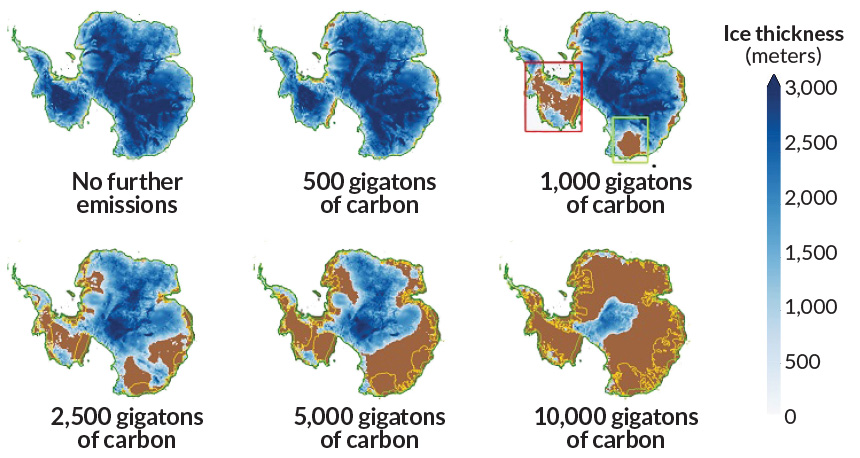Burning remaining fossil fuels would eradicate Antarctic ice

Burning Earth’s remaining fossil fuels would result in a nearly iceless Antarctica, researchers predict. Different emissions scenarios result in different extents of Antarctic ice 10,000 years in the future.
Ken Caldeira and Ricarda Winkelmann







